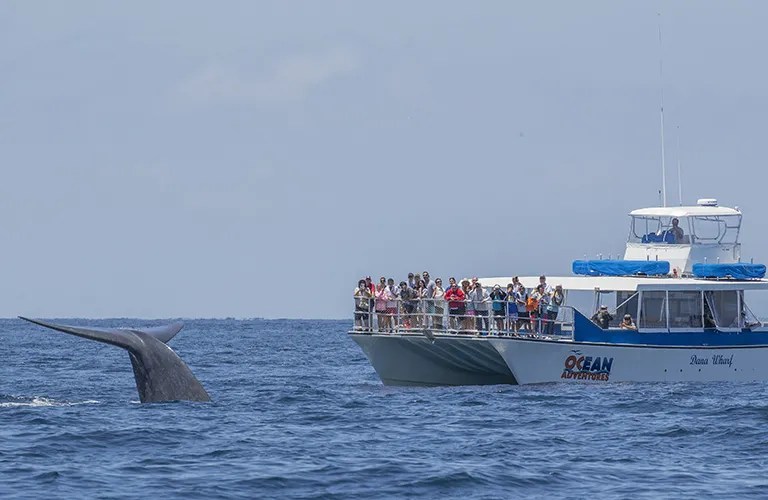Can Whales Smell Understanding the Olfactory Abilities of Cetaceans

Whales, the majestic giants of the ocean, captivate our curiosity with their size, intelligence, and unique adaptations. These creatures have evolved over millions of years to thrive in the vast oceanic environment, developing sensory systems that suit their aquatic lifestyle. One question that often arises is whether these cetaceans have the ability to smell. Understanding their olfactory abilities can provide deeper insights into how they navigate and interact with their environment, influencing behaviors such as feeding, mating, and social interactions. In this article, we explore the fascinating world of whale olfaction, examining scientific findings and shedding light on whether whales can indeed smell.
The sensory world of whales is complex and adapted to the unique challenges of the ocean. While humans rely heavily on sight and smell, whales have developed a range of other senses to aid in their survival. By exploring the olfactory capabilities of whales, we can gain a greater appreciation for the diversity of life and the myriad ways in which animals have adapted to thrive in their respective habitats.

The Anatomy of Whale Senses
Whales belong to the order Cetacea, which includes two main suborders: Mysticeti (baleen whales) and Odontoceti (toothed whales). Both groups have adapted to life in the ocean, but their sensory abilities can differ significantly, reflecting their distinct ecological niches and feeding strategies.
Mysticeti vs. Odontoceti
Baleen whales, or Mysticeti, are known for their filter-feeding system using baleen plates to sieve small organisms from the water. This feeding method requires a keen ability to locate dense swarms of plankton and other small prey, potentially utilizing multiple senses to do so. Toothed whales, or Odontoceti, are active predators that hunt fish and squid using echolocation, a sophisticated biological sonar. Their reliance on echolocation suggests a shift in sensory priorities, focusing on sound over olfactory cues. This divergence in feeding strategies has influenced the evolution of their sensory systems, including their olfactory capabilities, leading to varied adaptations that suit their respective lifestyles.
Do Whales Have Olfactory Bulbs?
Olfactory bulbs are brain structures involved in the sense of smell. In many terrestrial mammals, olfactory bulbs are well-developed and play a crucial role in detecting scents. However, the presence and development of olfactory bulbs in whales vary, reflecting their adaptation to an aquatic environment where the role of smell may differ from that on land.
Mysticeti: A Limited Sense of Smell
Research suggests that some baleen whales possess olfactory bulbs, albeit reduced in size compared to terrestrial mammals. For instance, studies on the bowhead whale and the gray whale have identified small olfactory bulbs, indicating a limited sense of smell. This reduced olfactory capacity may still play a role in certain behaviors, such as detecting food sources or pheromones during mating. The reduced olfactory structures in these whales suggest that smell is not their primary sensory tool, but it may still contribute to their overall sensory repertoire, aiding in specific ecological functions.
Odontoceti: Almost No Sense of Smell
In contrast, toothed whales generally lack olfactory bulbs altogether. Studies on species like the bottlenose dolphin and the sperm whale show an absence of these structures, indicating that they have virtually no sense of smell. Instead, these whales rely heavily on echolocation and other senses to navigate and hunt in their oceanic environment. The reliance on sound and other sensory modalities has allowed toothed whales to thrive as effective predators, showcasing an evolutionary trade-off where olfactory capabilities have diminished in favor of enhanced auditory and tactile senses.
The Role of Smell in Whale Behavior
The presence or absence of olfactory capabilities in whales raises questions about the role smell plays in their behavior and survival. Understanding how whales utilize or compensate for olfactory cues can reveal much about their ecological strategies and interactions.
Feeding Habits and Smell
In baleen whales, a limited sense of smell might play a role in detecting krill swarms or other food sources from a distance. The ocean is a vast and dynamic environment, and even a rudimentary sense of smell could aid in locating dense aggregations of prey. However, the extent to which they rely on smell compared to other senses, like sight and sound, is still a topic of research. As these whales often feed at great depths or in turbid waters, their sensory systems must be finely tuned to detect food in challenging conditions.
Social Interactions and Communication
For toothed whales, who lack olfactory bulbs, social interactions and communication are more likely mediated by sound and touch rather than smell. These whales are known for their complex vocalizations and social structures, which enable them to communicate and interact effectively without relying on olfactory cues. Their sophisticated vocalizations and social structures demonstrate that they have adapted alternative methods for communication and interaction, utilizing sound to maintain social bonds, coordinate group activities, and convey information over long distances.
Evolutionary Considerations
The evolution of sensory systems in whales reflects their adaptation to an aquatic lifestyle. As they transitioned from land-dwelling ancestors to fully marine creatures, certain sensory modalities became more or less emphasized based on ecological needs. This evolutionary journey highlights the dynamic nature of adaptation, where sensory systems evolve in response to changing environmental pressures and ecological niches.
Adaptations to Aquatic Life
The reduction or loss of olfactory capabilities in whales may be an adaptation to the aquatic environment, where other senses like echolocation and vision are more advantageous. In water, the diffusion of odor molecules is different from air, possibly diminishing the effectiveness of smell as a primary sensory modality. The shift towards other senses such as hearing and touch allows whales to detect prey, navigate vast distances, and engage in social interactions more effectively, illustrating how sensory priorities have shifted in response to the demands of marine life.
Comparative Analysis with Other Marine Mammals
Comparing whales to other marine mammals, such as seals and sea lions, highlights different evolutionary paths. While seals and sea lions maintain a more developed sense of smell, likely due to their amphibious lifestyle, whales have evolved distinct adaptations suited to their fully aquatic existence. This comparison underscores the diversity of sensory adaptations among marine mammals, each tailored to their unique ecological niches and lifestyle requirements, offering insights into the broader patterns of sensory evolution in the marine environment.
Current Research and Discoveries
Ongoing research continues to uncover new insights into the olfactory abilities of cetaceans. Advances in technology and methodology allow scientists to explore the genetic and anatomical aspects of whale olfaction more thoroughly, providing a deeper understanding of how these animals perceive their world.
Genetic Studies
Genetic studies have revealed that many cetaceans have olfactory receptor genes, which are typically associated with the sense of smell. However, the functionality of these genes varies, and in many toothed whales, they appear to be non-functional or “pseudogenized,” supporting the idea of a diminished sense of smell. This genetic evidence suggests a gradual evolutionary shift away from reliance on olfaction, highlighting the dynamic nature of sensory evolution in response to ecological pressures and environmental changes.
Anatomical Investigations
Advanced imaging techniques and anatomical studies have provided detailed insights into the olfactory structures of whales. For example, research using MRI scans has mapped the presence and size of olfactory bulbs in various species, offering clues about their sensory capabilities. These studies not only enhance our understanding of whale sensory systems but also raise questions about the evolutionary pressures that have shaped their development, prompting further exploration into the complex interactions between genetics, anatomy, and behavior.
Can Whales Smell?
The question of whether whales can smell does not have a straightforward answer. It depends on the species and their evolutionary adaptations, reflecting the diverse strategies that different cetaceans have adopted to thrive in the ocean. Baleen whales may have a limited sense of smell that aids in certain behaviors, such as locating food or detecting chemical signals, while toothed whales seem to have largely sacrificed this sense in favor of other sensory modalities like echolocation.
Understanding the olfactory abilities of whales not only satisfies our curiosity but also enriches our knowledge of how these incredible animals have adapted to thrive in the ocean. As research progresses, we can look forward to even deeper insights into the sensory world of cetaceans, revealing the intricate ways in which evolution shapes the senses in response to ecological challenges. In summary, while the olfactory capabilities of whales vary, their remarkable adaptations to the marine environment showcase the diverse evolutionary paths that life can take in response to ecological challenges, underscoring the complexity and diversity of life in our oceans.
